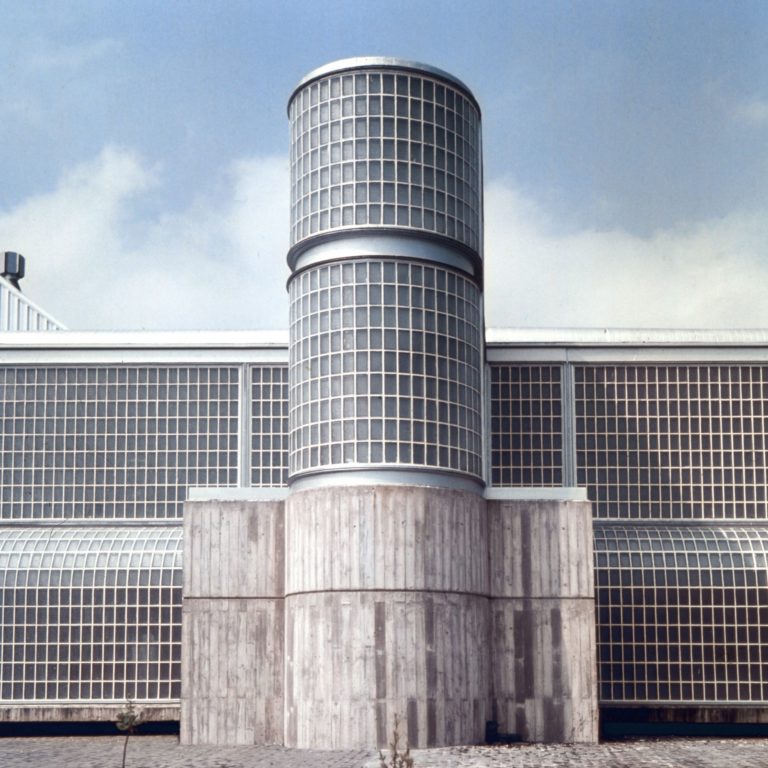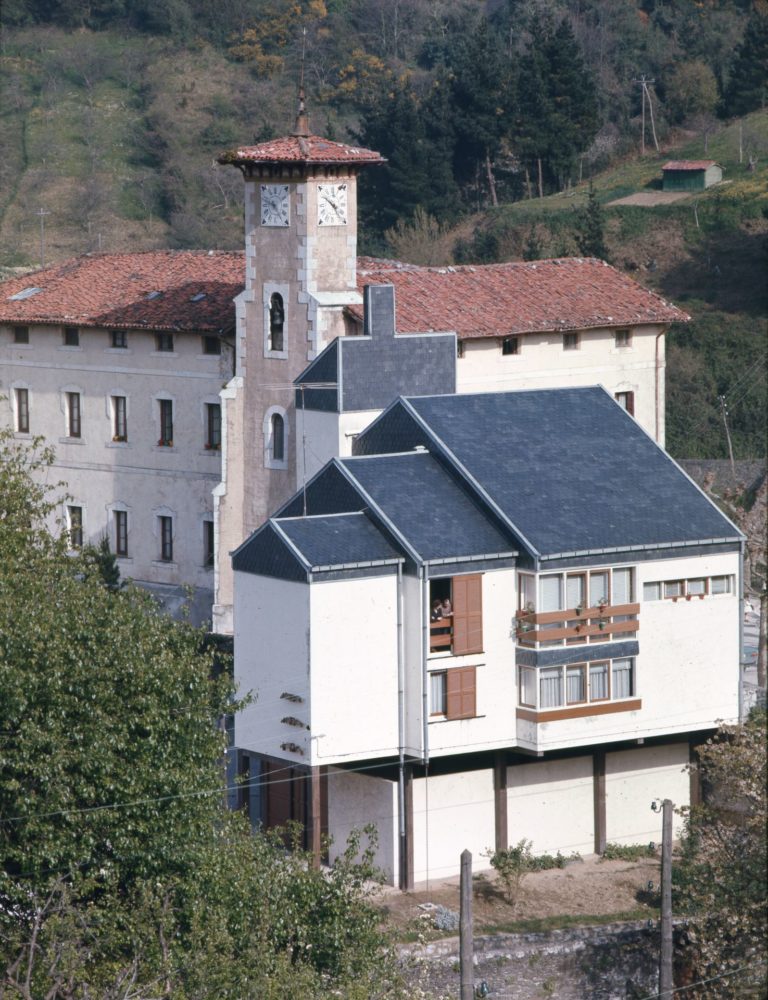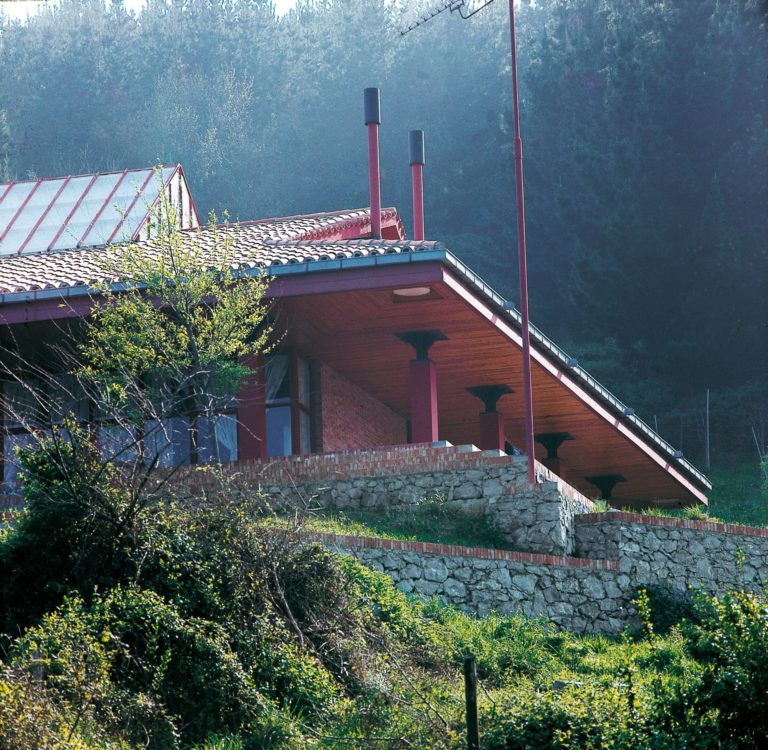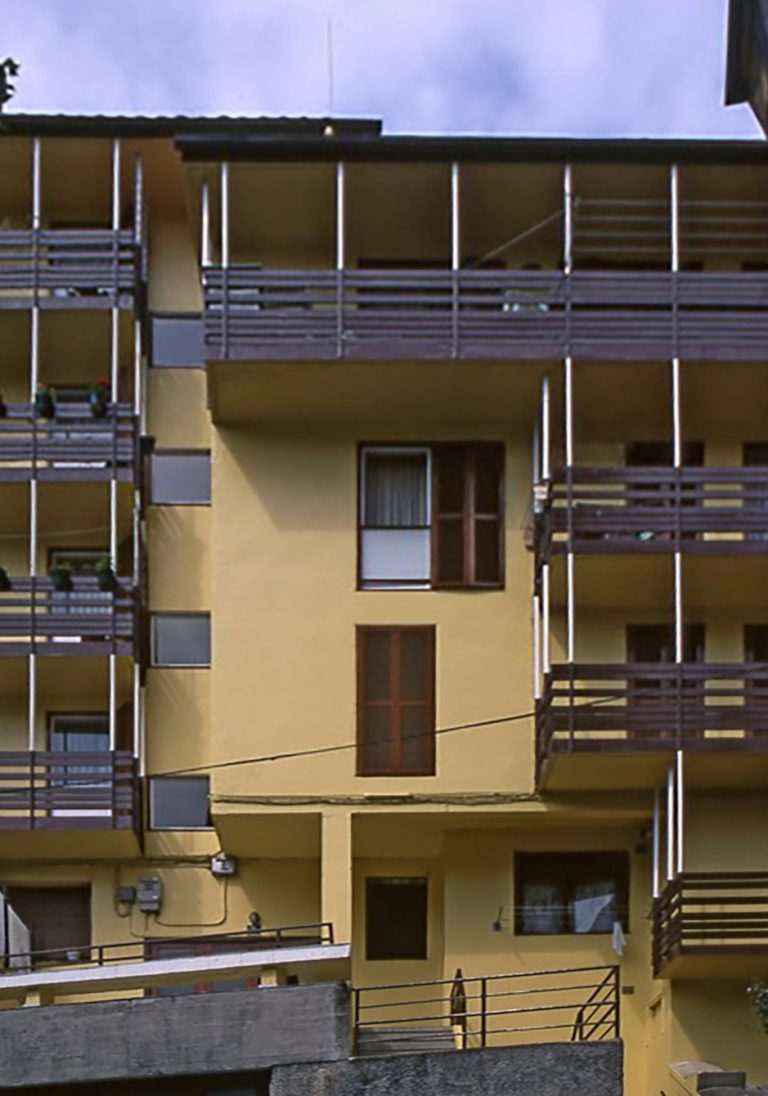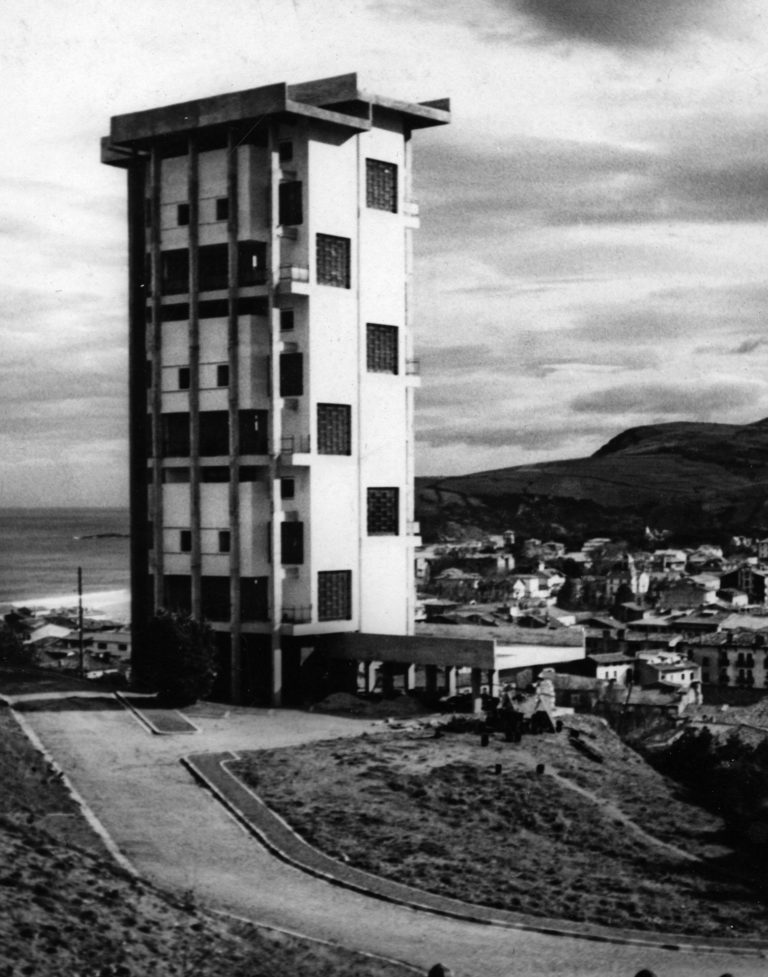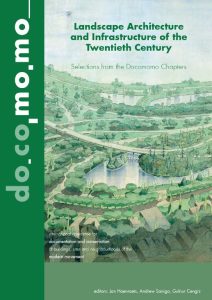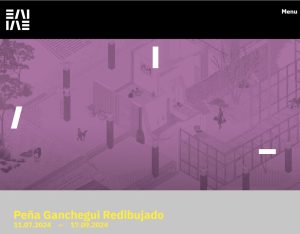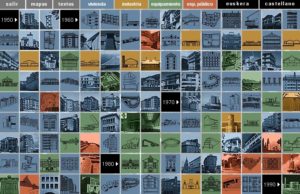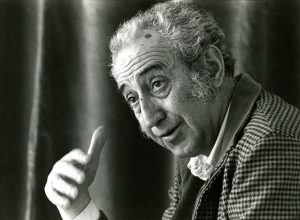
Luis Peña Ganchegui
Oñate, 1926-San Sebastián, 2009
Although Luis Peña Ganchegui was born in Oñati, he always considered himself a native of Mutriku, his parents’ hometown. With its sloping streets, its public spaces at different levels, and its connection to nature, this picturesque town on the Gipuzkoan coast was his geographical point of reference as he moved around during his youth: first to Vitoria in 1937, to begin his baccalaureate; then to Donostia-San Sebastián, from 1939, to complete it; later to Madrid, in 1945, for university; and finally back to San Sebastián, where he moved after graduating in 1960 and remained until the end of his life.
His studies in architecture at the Madrid School were preceded by a decade of living in the Spanish capital. This prolonged stay, caused by the difficulty of passing the entrance exams, gave the future renovator of Basque architecture the opportunity to develop his skills as a painter and immerse himself in an intellectual and cultural world previously unknown to him. In addition to attending lectures, exhibitions and concerts, he frequented the social gatherings hosted by Pío Baroja and struck up friendships with eminent intellectuals like Juan Benet and Luis Martín Santos.
Those enriching experiences prior to beginning his degree, combined with the extraordinary classmates and professors that he encountered during his studies, influenced his personality and helped make him a significant figure from the beginning of his professional career. He began working even before finishing his studies, with the design for the Torre Vista Alegre (Zarautz, 1959), developed in the studio of Juan Manuel Encío, an architect with whom he collaborated until he founded his own studio in 1961.
The recognition of that initial project, supported by its inclusion in national and international publications, was reconfirmed with the construction of the Plaza de la Trinidad (Donostia, 1963) during his short period as municipal architect. A pioneering project to renovate an urban void in the historic centre and generate a public space, the Plaza de la Trinidad revealed Peña Ganchegui’s special sensitivity towards the context and his enormous ability for entering into a dialogue with existing conditions.
His mastery as an architect of “place” was consolidated over the years, as he displayed a broad range of solutions in a variety of situations. In the early 1960s, the town of Mutriku – which represented his concept of “place” from childhood – became his field of experimentation, the laboratory where he formulated residential designs adopting various typologies in response to specific requirements in terms of site and programme. The housing in Olazabal (1962), Iparraguirre (1963-1964), and Aizetzu (1964), along with the Imanolena House (1964), are examples of Peña Ganchegui’s interest in responding to the context with an architecture that combined tradition and modernity. His extensive and rigorous work, consisting mainly of residential buildings, public facilities, and industrial buildings, defines like no other the principles required to adapt modern architecture to the urban and rural conditions of the Basque Country, in the framework of what was called Critical Regionalism.
Yet it would be a mistake to frame Peña Ganchegui’s contribution as limited to a local context. Although his work was rooted in the process of recovery and renewal of Basque culture during the second half of the 20th century, it transcended that region. This is evidenced by the Basque architect’s most celebrated work: the Plaza del Peine del Viento (San Sebastián, 1976). A perfect symbiosis between nature, art and architecture, the anteroom for Eduardo Chillida’s sculpture group constitutes a timeless and universal reference. Designed after more than 15 years of professional experience, when its author had already demonstrated his special sensitivity towards the genius loci – the spirit that turns each ‘site’ into a ‘place’ – its design shows echoes of land art at a time when the discipline was still being defined across the Atlantic.
Like other architects of his generation, Peña Ganchegui combined his professional practice with other activities tied to architectural debate. Between 1978 and 1983, his commitment to the culture of his country led him to promote the founding of the San Sebastián School of Architecture, from which he retired as a professor of Architectural Design in 2000.
The awards and recognitions won by Luis Peña Ganchegui throughout his career include the Munibe Prize from the Basque Government in 1997, the Antonio Camuñas Prize from the Camuñas Foundation in 1999, and the Gold Medal for Architecture, awarded by the Superior Council of Spanish Architects’ Associations in 2004.
Biography by Rocío Peña and Mario Sangalli
Picture of Luis Peña Ganchegui: César San Millán
Bibliography
- SANGALLI, Mario, Luis Peña Ganchegui. El Arquitecto como lugar, Colegio Oficial de Arquitectos Vasco-Navarro, San Sebastián, 2016.
- AMANN, Atxu, CANOVAS, Andrés, Luis Peña Ganchegui. Medalla de Oro de la Arquitectura 2004, CSCAE, Madrid, 2007.
- MARTIN DE BLAS, Juan Manuel, VICENT, Manuel, Elogio de la Luz (DVD from the series Rtve dedicated to Spanish architecture), RTVE, Madrid, 2003.
- PEÑA, Rocío, SANGALLI, Mario, Luis Peña Ganchegui, Arquitecto. Premio Munibe 1997, Servicio Central de Publicaciones del Gobierno Vasco, Vitoria, 1999.
- PEÑA, Rocio, SANGALLI, Mario, Luis Peña Ganchegui Arquitecturas 1958-1994 Arkitekturak. UPV/EHU San Sebastián, 1994.
- MOZAS, Javier, FERNÁNDEZ, Aurora, Tecnología y Arquitectura 9 [Monographic number dedicated to the architecture of Luis Peña Ganchegui], Gobierno Vasco, Vitoria, 1990.
- PAGOLA, Antón, MOZAS, Javier, FERNANDEZ, Aurora, “Mas allá de la función entrevista a Luis Peña Ganchegui”, in Tecnologia y Arquitectura 2, Gobierno Vasco, Vitoria, 1988.
- ROQUETA, Santiago, Peña Ganchegui: conversaciones, Blume, Barcelona, 1979.
- SANABRIA, Ramón, “Peña Ganchegui: De la arquitectura popular a la arquitectura de vanguardia”, in Hogares Modernos 105, E. G. Curt, Barcelona, 1975.
- DOMENECH, Lluís, “Peña Ganchegui, arquitecto euskera”, in Arquitecturas bis 3, La Gaya Ciencia, Barcelona, 1974.
- BALDELLOU, Miguel Ángel, “La tradición viva en la obra de Luis Peña Ganchegui”, in Hogar y Arquitectura 113-114, Obra Sindical del Hogar, Madrid, 1974.
- FULLAONDO, Juan Daniel, “Luis Peña Ganchegui. Empirismo, Ironía, Cultura”, in Nueva Forma 59, HISA, Madrid, 1970.
